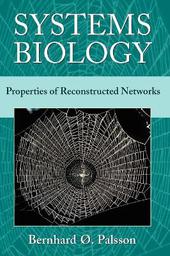
|
Systems Biology: Properties of Reconstructed Networks
Hardback
Main Details
| Title |
Systems Biology: Properties of Reconstructed Networks
|
| Authors and Contributors |
By (author) Bernhard O. Palsson
|
| Physical Properties |
| Format:Hardback | | Pages:336 | | Dimensions(mm): Height 261,Width 20 |
|
| Category/Genre | Genetics (non-medical)
Molecular biology |
|---|
| ISBN/Barcode |
9780521859035
|
| Classifications | Dewey:572.80285 |
|---|
| Audience | | Tertiary Education (US: College) | | Professional & Vocational | |
|---|
|
Publishing Details |
| Publisher |
Cambridge University Press
|
| Imprint |
Cambridge University Press
|
| Publication Date |
16 January 2006 |
| Publication Country |
United Kingdom
|
Description
Genome sequences are now available that enable us to determine the biological components that make up a cell or an organism. The discipline of systems biology examines how these components interact and form networks, and how the networks generate whole cell functions corresponding to observable phenotypes. This textbook, devoted to systems biology, describes how to model networks, how to determine their properties, and how to relate these to phenotypic functions. The prerequisites are some knowledge of linear algebra and biochemistry. Though the links between the mathematical ideas and biological processes are made clear, the book reflects the irreversible trend of increasing mathematical content in biology education. Therefore to assist both teacher and student, in an associated website Palsson provides problem sets, projects and Powerpoint slides, and keeps the presentation in the book concrete with illustrative material and experimental results.
Author Biography
Bernhard O. Palsson, Professor of Bioengineering and Adjunct Professor of Medicine, University of California, San Diego.
Reviews'... [deserves] serious attention from any quantitative scientist or physicist who hopes to learn about modern biology. ... a welcome departure from the typical biology textbook. ... a very readable introduction to the subject ... this is an exciting time for biology. The author exposes readers to enough material that the research literature in quantitative systems biology should become accessible.' Physics Today
|